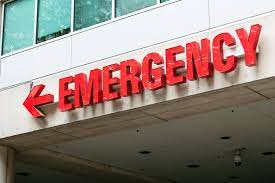
Emergency services in a hospital are essential for providing immediate care to patients experiencing acute medical conditions or crises. Here’s a more detailed overview:
1. Emergency Department (ED)
- Function: The ED is designed to handle urgent and life-threatening conditions. It operates around the clock.
- Access: Patients can arrive via ambulance or walk in. Triage determines the order of treatment based on the severity of their condition.
2. Triage Process
- Assessment: When patients arrive, they undergo a quick assessment to determine the urgency of their needs.
- Categories: Triage categories may include critical, urgent, and non-urgent, ensuring those in greatest need receive prompt care.
3. Medical Team
- Staff Composition: The team typically includes emergency physicians, nurses, physician assistants, and other healthcare professionals trained in emergency care.
- Specialists: In serious cases, specialists (e.g., surgeons, cardiologists) may be consulted for further evaluation and treatment.
4. Diagnostics and Treatment
- Imaging and Labs: Quick access to imaging (X-rays, CT scans) and lab tests is critical for accurate diagnosis.
- Immediate Care: Treatments may include resuscitation, wound care, medication administration, and minor or major surgical interventions.
5. Trauma Care
- Dedicated Trauma Centers: Some hospitals have specialized trauma centers equipped to handle severe injuries from accidents or violence.
- Protocols: Trauma patients often follow specific protocols to ensure rapid and effective care.
6. Support Services
- Pharmacy: Emergency pharmacies provide rapid access to necessary medications.
- Social Services: Support for patients and families, including mental health resources and discharge planning.
7. Patient Discharge and Follow-Up
- Stabilization: After treatment, patients may be discharged with instructions for follow-up care or admitted for further observation and treatment.
- Referral Services: Patients may be referred to specialists for ongoing care as needed.
8. Emergency Medical Services (EMS)
- Ambulance Services: EMTs and paramedics provide pre-hospital care and transport patients to the ED, often stabilizing them en route.
Emergency services play a critical role in saving lives and managing urgent medical situations. If you have more specific questions or need information about a particular aspect, feel free to ask!
Download Image